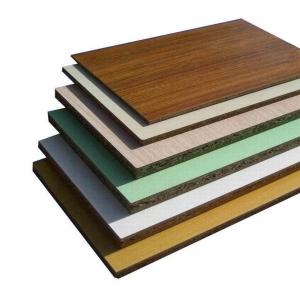Lightweight Plywood – When Portability is Paramount
When you think about construction materials, the first thing that might come to mind is the weight and bulkiness of traditional wood. But what if there was a material that combined the strength and durability of wood with the portability of plastic? That’s where lightweight plywood comes in, offering a versatile and practical solution for a wide range of applications.
The Wonders of Lightweight Plywood
Lightweight plywood is a type of engineered wood product that is designed to be lighter than traditional plywood. It is made from thin layers of wood veneer that are glued together with a lightweight adhesive. This construction not only reduces the weight but also enhances the strength and flexibility of the material.
Why Choose Lightweight Plywood?
Choosing lightweight plywood over traditional plywood or other materials can have several benefits. Here are some reasons why you might want to consider this material for your next project:
1. Portability: The reduced weight of lightweight plywood makes it easier to transport and handle, which is especially important for projects that require frequent movement or repositioning.
2. Strength and Durability: Despite its lightweight nature, lightweight plywood maintains the strength and durability that wood is known for. It can withstand heavy loads and resist wear and tear, making it suitable for both indoor and outdoor use.
3. Versatility: This material can be used for a variety of applications, from furniture making to set design, and even in the construction of temporary structures. Its adaptability makes it a popular choice among professionals and DIY enthusiasts alike.
4. Cost-Effectiveness: Lightweight plywood is often more affordable than traditional plywood, making it an attractive option for those looking to save on material costs without sacrificing quality.
5. Environmentally Friendly: The production of lightweight plywood is more sustainable than that of traditional plywood, as it uses less wood and requires fewer resources. This makes it a more eco-friendly choice for those looking to reduce their environmental impact.
The Making of Lightweight Plywood
The process of creating lightweight plywood involves several steps, each of which contributes to its unique properties. Here’s a brief overview of how this material is made:
1. Veneer Preparation: Thin layers of wood veneer are carefully selected and prepared to ensure uniformity and quality.
2. Adhesive Application: A lightweight adhesive is applied to the veneers, which bonds them together while adding minimal weight.
3. Laminating: The veneers are then pressed together under heat and pressure, creating a strong and stable panel.
4. Trimming and Finishing: The edges of the plywood are trimmed and smoothed, and any defects are addressed to ensure a high-quality product.
Personal Touch: Customizing Your Lightweight Plywood
One of the best things about lightweight plywood is that it can be customized to suit your specific needs. Whether you’re looking for a particular color, pattern, or finish, there are options available to make your project truly unique.
1. Color Options: Choose from a range of colors to match your project’s aesthetic or to make a bold statement.
2. Patterned Surfaces: Add a touch of personality with patterned surfaces that can range from simple geometric designs to intricate artistic patterns.
3. Finishing Options: From matte to glossy, the choice of finish can dramatically affect the look and feel of your lightweight plywood project.
4. Size and Thickness: Select the size and thickness of your plywood to ensure it meets the requirements of your project.
5. Edge Treatments: Personalize the edges of your plywood with various treatments, such as rounding, beveling, or adding a decorative edge.
Embracing the Future with Lightweight Plywood
As we look to the future, the demand for materials that are both practical and sustainable is only going to increase. Lightweight plywood is well-positioned to meet this demand, offering a balance of portability, strength, and eco-friendliness that is hard to find in other materials.
Whether you’re a professional builder, a set designer, or simply someone looking to create something unique, lightweight plywood is a material that deserves your consideration. Its versatility, affordability, and sustainability make it an excellent choice for a wide range of projects. So why not give it a try and see what you can create with this remarkable material?

